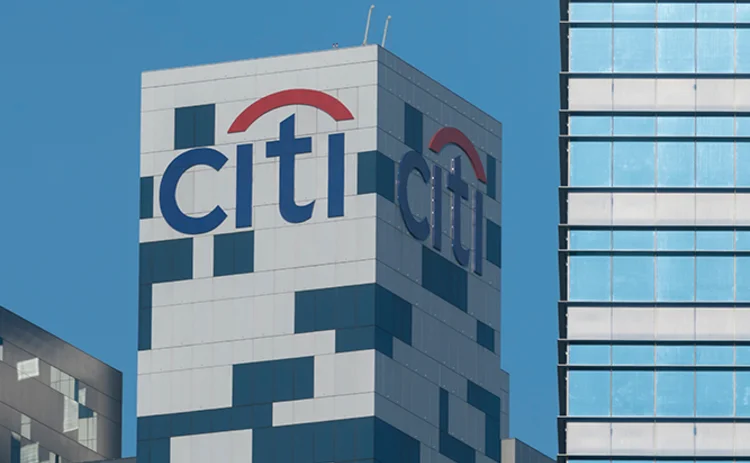
Clearing bank of the year: Citi
Asia Risk Awards 2021

Citi stood out this year by showing its strength in managing a global clearing franchise amidst an international pandemic through a combination of well-organised operations coordinated by staff in various Asian markets, and delivered by world class technological infrastructure, built over multi-year investments in technology and people.
“Prior to the pandemic, and over the years, we have made a significant investment in our technology infrastructure in the clearing space. This made sure our systems were resilient, and our operations could quickly adapt to the changed environment, helping us successfully navigate through the pandemic with minimal client disruptions,” says Sachin Tulshyan, a Citi managing director and the Asia-Pacific (Apac) product head for futures, clearing and foreign exchange prime brokerage. “In comparison, our competitors have not had the same level of resiliency, and there have been instances of outages due to overwhelmed systems during this time.”
The Apac clearing team demonstrated a strong appreciation of clients’ interests and needs across the region. For example, Citi was the first clearing broker to offer clearing via Eurex in Japan, and further advocated to central counterparties (CCPs) to support additional non-cash collateral types in light of phase-five uncleared margin requirements (UMR).
Covid-19 response
Asia was hit early on by Covid-19, but the bank was able to activate its contingency plans across the region, which enabled it to “continue its operations seamlessly with minimal client impact”, says Manu Dua, the bank’s head of sales for futures, clearing and FX prime brokerage in Asia. “The trade settlements and clearing happened as per the schedule.”
Prior to the pandemic, and over the years, we have made a significant investment in our technology infrastructure in the clearing space. This made sure our systems were resilient, and our operations could quickly adapt to the changed environment
Sachin Tulshyan, Citi
During the pandemic, a large proportion of the bank’s staff started working from home and Citi’s clearing team was able to adapt seamlessly to a remote working environment. He adds that “clients were very satisfied with Citi’s arrangements and did not feel any [adverse] impact [to service] due to staff working from home”.
With the ongoing Covid crisis and elevated market volatility, Citi started proactive engagement with CCPs to encourage a review of best practices mainly around anti pro-cyclicality, margin adequacy, transparency of ad hoc calls as well as improvement in technology to alleviate liquidity issues in the event of large market movements.
Global bank, local markets
Citi’s operations stretch across Asia, yet, as business has become more competitive regionally, those entering the fray will need robust risk management and strong balance sheets in order to support and provide sufficient trading capacity to meet clients’ demand.
Tulshyan stresses that the bank has a deep local involvement in each product category it offers, adding that it wants to be relevant to clients across geographies and product lines. To that end, Citi’s clients have appreciated the cross-product and cross-margin capabilities it has provided them with.
UMR and FX clearing
Citi also deserves to be lauded for various thought-leadership events around phase-five UMR requirements, which finally started in September this year after a one-year delay due to Covid.
“There’s a clear merit to uncleared margin rules in reducing the systemic and credit risks. Participants, especially in the FX market, see this as an opportunity to innovate, which has resulted in massive interest to move from bilateral to cleared trades,” says Tulshyan.
Citi proactively reached out to regional clients to offer support around impending regulatory changes and readiness for the rollout.
To support and drive clearing adoption, Citi developed the FX PrimeClear model that enables clients to preserve their preferred prime brokerage operational model and bilateral liquidity, while achieving real-time clearing of their FX non-deliverable forwards.
“We foresee NDF clearing picking up in the region, especially among clients from Taiwan and [South] Korea,” says Weilong Tan, a Citi product manager and assistant vice-president for over-the-counter clearing and FX prime brokerage in Singapore. “Anticipating that the demand for collateral and high-quality liquid assets will increase, we advocated to CCPs to introduce and support domestic securities as eligible non-cash collateral. This has provided our clients with funding alternatives, which helps to alleviate their liquidity and cost concerns. ”
Such assets include government securities denominated in Australian and Singapore dollars to promote clearing as an alternative; against the backdrop of a vast transformation for clients to comply with UMR phase-five requirements.
Speaking on condition of anonymity, one Citi client in Tokyo said his firm was very satisfied with the bank as his firm’s non-Japanese yen derivatives broker.
“In the Tokyo time zone, they are very prompt and efficient in the service they provide,” he says.
Only users who have a paid subscription or are part of a corporate subscription are able to print or copy content.
To access these options, along with all other subscription benefits, please contact info@risk.net or view our subscription options here: http://subscriptions.risk.net/subscribe
You are currently unable to print this content. Please contact info@risk.net to find out more.
You are currently unable to copy this content. Please contact info@risk.net to find out more.
Copyright Infopro Digital Limited. All rights reserved.
As outlined in our terms and conditions, https://www.infopro-digital.com/terms-and-conditions/subscriptions/ (point 2.4), printing is limited to a single copy.
If you would like to purchase additional rights please email info@risk.net
Copyright Infopro Digital Limited. All rights reserved.
You may share this content using our article tools. As outlined in our terms and conditions, https://www.infopro-digital.com/terms-and-conditions/subscriptions/ (clause 2.4), an Authorised User may only make one copy of the materials for their own personal use. You must also comply with the restrictions in clause 2.5.
If you would like to purchase additional rights please email info@risk.net
More on Awards
Regulatory capital calculation product of the year: S&P Global Market Intelligence
S&P Global Market Intelligence’s win highlights its Traded Market Risk Solution’s effectiveness in meeting the stringent requirements of FRTB
Financial crime product of the year: LexisNexis Risk Solutions
LexisNexis Risk Solutions wins Financial crime product of the year at the Risk Technology Awards 2025
Bank ALM system of the year: Prometeia
Reflecting the strength of Prometeia’s ALM platform and the firm’s alignment with the needs of modern risk and performance management
Best in-house risk data initiative: EFG Bank
EFG Bank’s Digital Risk Pilot unifies risk data, enhances analytics and reporting, and empowers decision-makers with enterprise-wide insights
IFRS 9 solution of the year: Acies
Acies’ Kepler IFRS 9 solution recognised for speed, scalability, ability to streamline compliance and enhance credit risk analysis
Best in-house credit risk technology: Generali Asset Management
Generali’s platform uses predictive analytics and systemic mapping to manage credit risk across €230 billion in assets
Credit data provider of the year: Credit Benchmark
Credit Benchmark delivers comprehensive insights and extensive coverage so financial institutions can make informed decisions
Data and analytics firm of the year: LSEG Data & Analytics
Energy Risk Awards 2025: Firm’s vast datasets and unique analytics deliver actionable insights into energy transition trends






















